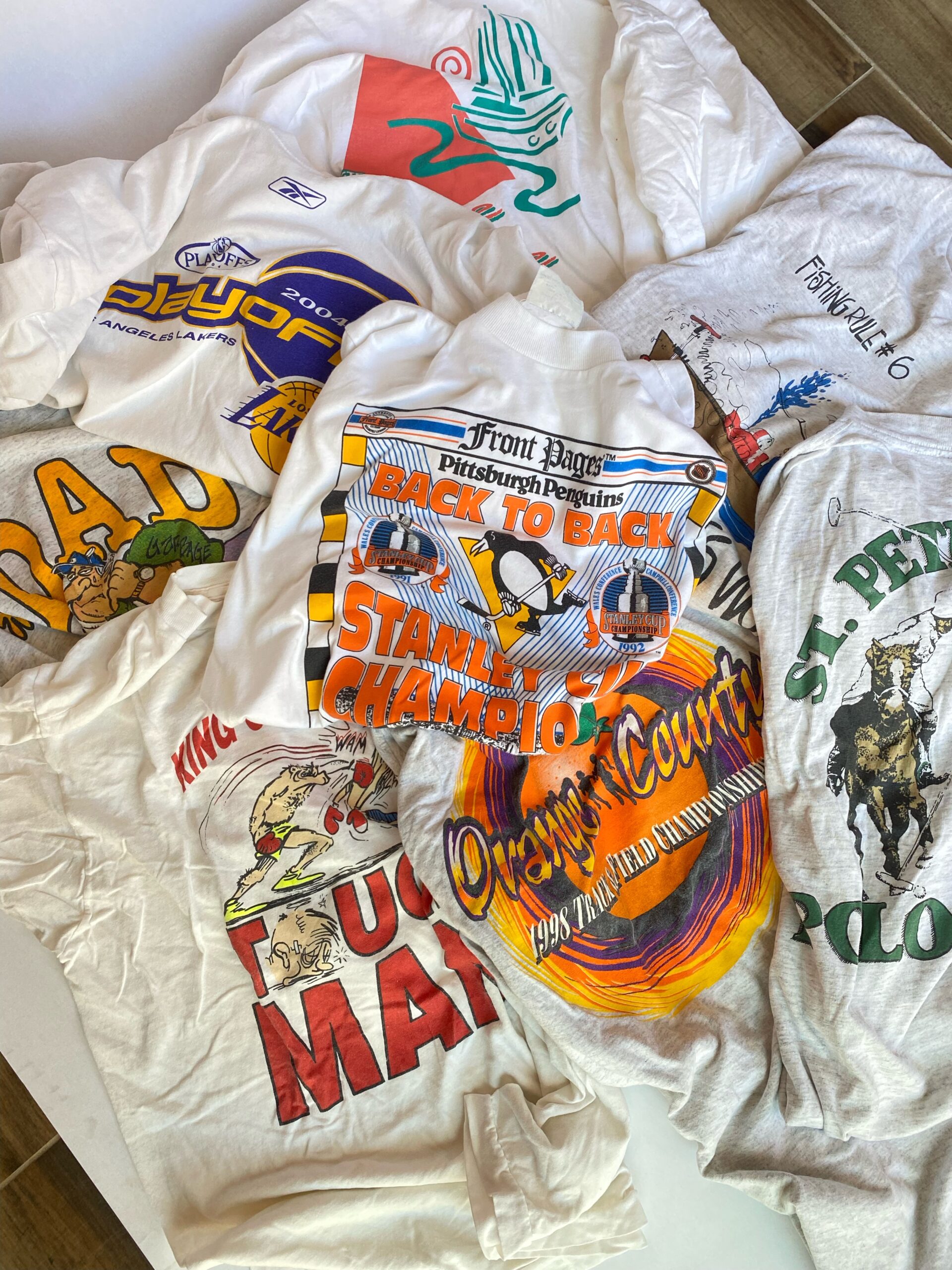The number of second-hand clothing resellers has been blowing up in the last decade, and I found myself right in the middle of it. Ever since I was a little kid, I have been fascinated with thrift stores. The strangest and coolest things can be found under the same roof and for a cheap price. I could buy anything in a guilt-free manner while contributing to a greener, more circular economy. As I grew up, I found myself going to thrift stores to find one thing: clothes. I kept finding such cool clothes that I could wear to any occasion but I really didn’t have any space to put them. It became an addiction that had no real benefit other than the feeling I would get from finding a cool piece on a clothing rack until one of my brother’s friends introduced the idea of selling the clothes that I found. He had been doing so for a short period of time and proved to me that the concept was possible and could bring monetary value.
Though becoming a second-hand clothing reseller seemed like a natural path for me, three very layered reasons truly convinced me to pursue the business: the ability to make money, effectively curate my wardrobe, and the opportunity to create a business emphasizing a greener economy.
Making Money

The second-hand clothing market has been expanding rapidly and doesn’t seem to be stopping. In 2024, the market was valued at $43 billion and is estimated to grow to $125 billion in just a decade. This growth is mostly due to people becoming more aware of the social and monetary implications of second-hand clothing purchases.
In 2021, when I began selling clothes, this idea of buying second-hand started to blow up on social media, and people realized how many cool, unique things they could find. This craze made selling super easy. As long as you have good products and a decent platform to sell them through, people will give you their money. For me, I started selling through Depop. They had the best-seller fees at the time and provided the most buyer-saturated online market. This was a great starting point for me. It gave me the flexibility to post and sell whenever I wanted easily. Though this method provided great value to me and insight into what the market wanted, the real money started coming in once I started selling at Flea Markets. Flea Markets are filled with people that are ready to buy and in some cases, actually get to try on the clothes to make sure they are a perfect fit. It is common to sell one day at a Flea Market and walk away with a $400-$1,000+ net profit. Combine monetary value with consistent markets, and you have a real money-churning business.
Curating My Wardrobe
Selling second-hand clothing has helped me curate my own style. When I was a kid, I felt a weird sense of guilt whenever I went shopping. Not wanting to pick out a piece of clothing I didn’t like AND having to pay for it made me fear experimentation with style. Soon after getting into second-hand, I learned experimentation is what I needed. I would try on so many clothes that were too large, too small, had crazy colors, were monotone and found out what type of clothing made me feel the most confident. Sometimes, I would only get that confident feeling for a few wears, but that didn’t matter because I got to try out something new and had a platform to sell it through when it no longer served me. Basically, I would buy a cheap piece of clothing destined for a landfill, learn what drew me to the item, and then rotate it out for the next exciting piece that was more catered to my style. This cycle took away my feeling of guilt around clothes. Through years of doing this, my wardrobe really started to reflect who I was creatively and what qualities I needed from my clothes.
A Greener Economy

Naturally, being somebody who loves the quirks of thrifting, it was a no-brainer to start selling second-hand, but living in a time of consumerism, fast fashion, and globalized manufacturing, it is hard to stay ignorant of the amount of waste that the fashion industry produces. According to a Business Insider Analysis, the fashion industry comprises 10% of global carbon emissions and sends 92 million tons of clothes and garment scraps to the landfill each year.
Thankfully, selling second-hand clothing extends the life cycle of a piece of clothing, reducing our overall carbon footprint. When clothing gets donated to a thrift store, most of it will find its way into a bale destined for the landfill. By buying a product from the thrift store or places like the Goodwill bins, you re-introduce the product to the market, where it can live its second life. Extending the garment life cycle slows the need for more production of new clothing, reducing the amount of waste that is produced globally. Allowing myself to make money in the fashion industry while ever so slightly pushing back against the dawning statistics of modern fashion waste, aligned with my values and made it something I could feel proud of doing.

